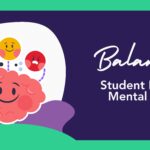Fears and phobias are not new phenomena and they have a profound impact on the ability of students to learn and thrive in a classroom environment. They also have an impact on the assignments of the students. When the students have specific fears or phobias, it can make it difficult for them to fully engage in their work. For instance, if an individual fears public speaking, they might struggle with presentations or class discussions. This affects their ability to express their thoughts and ideas and participate in group activities.
Similarly, if a student has a fear of failure, it can create anxiety and pressure when it comes to completing assignments. They might be afraid of making mistakes or not matching their high standard, which leads to procrastination or avoidance of certain tasks. Due to these reasons, many students seek high-quality MBA assignment writing services UK to receive expert support in their academic endeavors.
Along with that, some students may have phobias that are unrelated to academics but still impact their ability to focus and concentrate. For example, if a student has a fear of insects and there is a bug in the classroom, it can be distracting for them and make it hard for them to concentrate on their work. In this blog post, we will delve into the various ways in which phobias and fear can affect student’s performance on assignments and discuss strategies to help them overcome these obstacles.
Understanding Phobias: Their Impact on Assignments
Phobias can exert a visible influence on a student’s academic performance. Recognizing and addressing these phobias is crucial for educators to build an inclusive learning environment for students.
Anxiety from Public Speaking
One of the common fears among students is public speaking anxiety. The thought of standing in front of the class can be paralyzing for many. This specific fear can visibly hinder a student’s ability to present assignments effectively.
To address this, instructors and educators provide alternative presentation options like written reports or recorded presentations. In addition to this, offering opportunities for students to participate in smaller groups or one-on-one settings can help in building their confidence. Also, creating a non-judgemental atmosphere during the presentation is crucial to easing this fear.
Assessment Anxiety:
Assessment anxiety is another fear that can highly impact a student’s performance in the classroom. The pressure of an impending test can trigger extreme anxiety, making it difficult for the students to demonstrate their real understanding of the material.
Educators can consider alternative assessment methods to alleviate this like projects, open-book tests, and essays. More so, clear instructions and expectations for assessments are essential. Another thing that can help students become more comfortable with the format, and reduce test-related anxiety is offering practice quizzes or most exams.
Social Anxiety:
Every student has different needs and requirements. For some students, social anxiety can be a significant barrier to participation in group activities or discussions. This fear can make it challenging for them to collaborate effectively with their peers.
To treat this, educators can allow for individual contributions in group assignments or discussions. By providing opportunities for students to work with a smaller, trusted group of peers they will have a more comfortable and supportive environment. Teachers should encourage an inclusive classroom atmosphere which is the key to helping students overcome social anxiety.
Specific Phobias:
There are some specific phobias such as fear of heights or spiders can be triggered by certain classroom activities or environments. These fears can be demotivating for students, making it crucial for educators to be aware of any potential triggers.
It is important to make adjustments to the classroom setup or activities to accommodate these phobias. Additionally, providing alternative assignments or allowing students to work in a space where they can feel more comfortable can help mitigate the impact of specific phobias.
Fear of Failure and Perfectionism:
Most of the students have the fear of failure and perfectionism which is paralyzing. They are under pressure to meet the expectations, whether self-imposed or external. It can hinder their creativity and productivity.
To combat this, instructors should encourage a growth mindset and emphasize the learning process over the result. Also, providing constructive feedback and praising effort rather than just focusing on the final product can help alleviate the fear of failure.
Phobias Linked to Specific Subjects or Topics:
There are cases, where students may have phobias or extreme aversions to specific subjects or topics. This can make it quite difficult for students to engage with the material and complete assignments related to those subjects.
Meanwhile, educators can address this by offering alternative assignments or allowing students to explore related concepts from a bit different angle. Besides this, additional resources or support for comprehending and coping with the subject matter can also be instrumental in helping these students succeed.
Role of Teachers & Educators in Overcoming These Phobias:
One critical aspect where fears and phobias come into play is during assignments.
Teachers and educators need to be understanding and supportive of students with fears and phobias. Creating a safe and inclusive classroom environment can help alleviate some of the anxiety and stress that these students may experience. As educators, it is essential to recognize and understand these challenges to create a supportive and inclusive learning space.
Recognizing the unique needs of students, and the challenges they face and finding ways to treat them can help in overcoming these fears. By doing so, educators can create a more inclusive and supportive learning environment for everyone. Still, if there is a need for assistance with assignments then Assignment Writing Services UK can be a game-changer for students facing any issues.
Final Thoughts!
Fears and phobias have an existence and raise impactful challenges that many students face in the classroom. It is the responsibility of educators and classmates to provide those students with fears and phobias an environment where they can open up and confidently speak their thoughts and ideas. By implementing thoughtful adaptation, we can help students to overcome these obstacles and thrive academically. It is crucial to foster a learning environment where every student feels valued, supported, and capable of reaching their potential.


